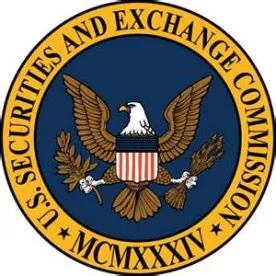By a 3-2 vote, the Securities and Exchange Commission (the “SEC”) approved the publication of a release1 on December 18, 2019, generally expanding the scope of the definitions of “accredited investor” in Rule 501(a) of Regulation D and “qualified institutional buyer” in Rule 144A under the Securities Act of 1933 (the “Securities Act”)2 to increase accessibility to private investment opportunities.3 The Release also proposed related changes to Rules 215 and 163B under the Securities Act and Rule 15g-1 under the Securities Exchange Act of 1934 (the “Exchange Act”).
I. Overview of the Amendments
-
Broadened Definition of “Accredited Investor.” The proposed amendments to the definition of “accredited investor” would create new opportunities for both natural persons and entities to qualify under Rule 501 by:
-
creating a category for individuals holding certain professional certifications and designations, such as a FINRA Series 7, 65 or 82 license, or other credentials approved by the SEC, to qualify as an accredited investor;
-
permitting a "knowledgeable employee" of a private fund, or of an investment adviser to a private fund, to qualify as an accredited investor for offerings of that fund’s securities;
-
expanding the categories of institutional accredited investors to include limited liability companies, registered investment advisers and rural business investment companies ("RBICs");
-
creating categories of accredited investors for "family offices" with at least $5 million in assets under management (“AUM”) and their "family clients," as each term is defined under the Investment Advisers Act of 1940 (the “Advisers Act”);
-
permitting couples in a “spousal equivalent” relationship to qualify as accredited investors by pooling their finances;
-
creating a “catch-all” category of institutional accredited investors for any entity, including any governmental body, provided that the entity owns investments valued in excess of $5 million and was not formed for the specific purpose of investing in the securities offered; and
-
clarifying that an entity may qualify as an accredited investor on the basis that all of the entity’s equity is owned directly or indirectly by accredited investors.
-
Broadened Definition of “Qualified Institutional Buyer.” The proposed amendments to the definition of “qualified institutional buyer” would:
-
expand the types of entities eligible for qualified institutional buyer status to include certain RBICs and limited liability companies that own and invest in at least $100 million in securities of unaffiliated issuers; and
-
permit an entity that qualifies as an institutional accredited investor under the “catch-all” category above to qualify as a qualified institutional buyer if it satisfies the $100 million investment threshold.
-
Corresponding Amendments to Other Rules. Rules 215 and 163B under the Securities Act and Rule 15g-1 under the Exchange Act would be amended to include the proposed new categories of accredited investors.
-
Comment Period. The comment period will end on March 15, 2020.
II. Broadened Definition of “Accredited Investor”
The SEC’s amendments to the definition of accredited investor are motivated in part by a desire to move away from the current rule’s use of wealth as the sole proxy for financial sophistication.4 The SEC recognizes that the proposed amendments to the definition of “accredited investor” would increase the categories of investor eligible to participate in private offerings of securities, and requests comment on the implications of the proposals. In particular, the SEC requests comment on investor protection considerations,5 and whether the proposals will increase liquidity in private capital markets or decrease liquidity in the public capital markets.6
A. Natural Persons
-
Credentialed Investors. The SEC proposes that initially individuals holding FINRA Series 7 (General Securities Representative), Series 65 (Investment Adviser Representative), or Series 82 (Private Securities Offerings Representative) licenses would qualify as accredited investors. In addition, in order to provide the SEC with regulatory flexibility, the proposed rule would give the SEC authority to issue orders designating individuals with other credentials to qualify as accredited investors where those credentials meet certain characteristics.7 Those characteristics are as follows:
-
“the certification, designation, or credential arises out of an examination or series of examinations administered by a self-regulatory organization or other industry body or is issued by an accredited educational institution;
-
the examination or series of examinations is designed to reliably and validly demonstrate an individual’s comprehension and sophistication in the areas of securities and investing;
-
persons obtaining such certification, designation, or credential can reasonably be expected to have sufficient knowledge and experience in financial and business matters to evaluate the merits and risks of a prospective investment; and
-
an indication that an individual holds the certification or designation is made publicly available by the relevant self-regulatory organization or other industry body.”8
-
Knowledgeable Employees of Private Funds. The proposed category of accredited investor would include a private fund’s “knowledgeable employees,” as defined in Rule 3c-5(a)(4) under the Investment Company Act of 1940 (the “Company Act”).9 As that definition includes a private fund’s trustees, board members, and any persons serving in a similar capacity, the proposed category would be similar to the existing category of directors, executive officers, and general partners of the issuer or of a general partner of the issuer who qualify as “accredited investors” under Rule 501(a)(4).10 Additionally, the proposed category would include directors, executive officers, and certain advisory personnel of a private fund’s investment adviser (e., knowledgeable employees of a fund’s investment adviser).11
-
Family Clients of Family Offices. “Family clients” (as defined in Rule 202(a)(11)(G)-1 under the Advisers Act) of family offices meeting the requirements described in Section II.B. below would be accredited investors.12 This would eliminate the inconsistency wherein a family client may be considered a qualified purchaser under the Company Act but not an accredited investor.13
-
Individuals Jointly with Their Spouses or Spousal Equivalents. Under Rules 501(a)(5) and 501(a)(6), an individual may qualify as an accredited investor if the individual, together with his or her spouse, has a joint annual income over $300,000 or a joint net worth over $1 million. The SEC proposes to allow an individual to qualify by aggregating income or net worth with a “spousal equivalent,” defined as “a cohabitant occupying a relationship generally equivalent to that of a spouse.”14
The SEC would also add a note to Rule 501(a)(5) to clarify that an individual may rely on the “joint net worth” test to qualify as an accredited investor, regardless of whether the individual is purchasing the securities individually or jointly with his or her spouse (or spousal equivalent).15
B. Qualifying Entities
-
Registered Investment Advisers (“RIAs”). The SEC proposed to expand the definition of “accredited investor” to include any investment adviser registered with the SEC or under the laws of the various states, as RIAs have “the requisite financial sophistication needed to conduct meaningful investment analysis.”16 The SEC has also requested comment on whether venture capital fund advisers and small private fund advisers exempt from SEC registration under Sections 203(l) or 203(m) of the Advisers Act (so-called “exempt reporting advisers”) should qualify as accredited investors.17
-
RBICs. The SEC proposed that RBICs, as defined in Section 384A of the Consolidated Farm and Rural Development Act, should qualify as accredited investors because (i) they have a similar purpose to small business investment companies (“SBICs”), (ii) they are treated similarly to SBICs under the Advisers Act, and (iii) SBICs are already accredited investors under Rule 501(a)(1).18
-
Limited Liability Companies. Noting the “widespread adoption of the limited liability company as a corporate form,” the SEC proposed to codify longstanding staff guidance that a limited liability company may qualify as an accredited investor if it satisfies the definition’s other requirements.19 A limited liability company that was formed specifically to acquire securities offered would not qualify as an accredited investor under Rule 501(a)(3), but such entity could qualify under Rule 501(a)(8) if all of the limited liability company’s equity owners were accredited investors.20 The SEC additionally notes that under the amendments, managers of a limited liability company would qualify as accredited investors under Rule 501(a)(4) by virtue of their status as “executive officers” of an issuer.21
-
Catch-All Category for Entities Owning $5M in Investments. The SEC proposed a “catch-all” category that would qualify any entity that is not specifically listed in the “accredited investor” definition if such entity (i) has “investments” (as defined in Rule 2a51-1(b) under the Company Act) in excess of $5 million, and (ii) was not formed for the specific purpose of investing in the securities offered.22
-
Family Offices. The SEC proposed to create a new category of accredited investor for any “family office” (as defined in Rule 202(a)(11)(G)-1 under the Advisers Act): (i) having over $5 million AUM; (ii) of which the investment decisions are directed by a person who has such knowledge and experience in financial and business matters that such family office is capable of evaluating the merits and risks of the prospective investment; and (iii) that is not formed for the specific purpose of acquiring the securities offered.23
-
Entities in Which All Equity Owners Are Accredited Investors. Under Rule 501(a)(8), an entity qualifies for accredited investor status if all of the entity’s equity owners are accredited investors. The SEC proposed to add a note to Rule 501(a)(8) in line with existing SEC guidance clarifying that such equity ownership may be direct or indirect.24
III. Broadened Definition of “Qualified Institutional Buyer”
Rule 144A provides an exemption from the registration requirements of the Securities Act for resales of certain securities to qualified institutional buyers. In order to be eligible for qualified institutional buyer status, an institution must (i) be one of the types of institutions specified in Rule 144A(a)(1), and (ii) own and invest over $100 million in securities of unaffiliated issuers.25 The proposed amendments to the definition of “qualified institutional buyer” would expand the list of qualifying institutions, corresponding directly to the proposed amendments to the definition of “accredited investor,” so as to eliminate anomalies between types of entities qualifying under either standard.26
-
RBICs and Limited Liability Companies. The SEC proposed amending Rules 144A(a)(1)(i)(C) and 144A(a)(1)(i)(H) to add RBICs and limited liability companies to the list of entities that qualify for qualified institutional buyer status if they meet the $100 million threshold.27
-
Institutional Accredited Investors Meeting the $100M Threshold. Any entity that does not fall within one of the existing categories of qualified institutional buyer would be permitted to qualify if it (i) is an institutional accredited investor under Rule 501(a) of any entity type not already included in Rule 144(a)(1), and (ii) meets the $100 million threshold.28
IV. Related Amendments to Other Rules
A. Rule 215
The definition of “accredited investor” in Rule 215 is not entirely consistent with the definition under Rule 501(a), as Rule 215 omits banks, insurance companies, registered investment companies, and business development companies from its scope. The amendment to Rule 215 would harmonize the definition of “accredited investor” with the proposed amendments to Rule 501(a) by replacing the existing definition with a cross-reference to Rule 501(a).29 The amendment would also relax Rule 215’s current strict liability standard in favor of Rule 501(a)’s requirement that an issuer must reasonably believe that a natural person or entity is an accredited investor.
B. Rule 163B
Rule 163B provides that issuers may engage in communications to institutional accredited investors and qualified institutional buyers to “test the waters” in registered offerings under the Securities Act. The proposed amendment to this rule would expand its existing reference to Rule 501 to include the proposed categories of accredited investor.30
C. Exchange Act Rule 15g-1
Exchange Act Rules 15g-2 through 15g-6 require broker-dealers to make certain disclosures to customers before engaging in “penny stock” transactions (as defined in Rule 4a51-1 under the Exchange Act). Rule 15g-1 currently exempts broker-dealers from this requirement in transactions in which the customer is an institutional accredited investor. The proposed amendment to this rule would expand its existing reference to Rule 501 to include the proposed categories of accredited investor.31
V. Summary and Policy Considerations
The proposed amendments to the "accredited investor" and “qualified institutional buyer” definitions are consistent with the agenda of the SEC under Chair Jay Clayton to promote capital formation and expand investment opportunities in the U.S. financial markets. The proposed amendments, which impact Regulation D issuers (i.e., private funds) and their investors, add new categories to the definitions, including catch-all categories that promote regulatory flexibility.
Interestingly, the SEC did not propose raising any of the financial thresholds in the current definition of “accredited investor” (i.e., $1 million net worth or $200,000 annual income for individuals and $300,000 annual income for couples, or for entities, $5 million in assets for entities), in effect generally since 1982. In the Release, the SEC states that any financial threshold changes would be disruptive to the Regulation D markets but has requested comment on this decision.32
1 Amending the “Accredited Investor” Definition, 85 FR 2574 (Jan. 15, 2020), available at https://www.govinfo.gov/content/pkg/FR-2020-01-15/pdf/2019-28304.pdf (the “Release”).
2 Unless otherwise noted, any references to Rules in this memorandum are to Rules under the Securities Act.
3 These changes are precipitated by Section 413(b)(2)(A) of the Dodd-Frank Wall Street Reform and Consumer Protection Act, which directs the SEC to review the definition of “accredited investor” as it relates to natural persons at least once every four years. See Release at 2575-76.
4 See id. at 2579, 2581.
5 One issue noted by the SEC is that individuals who qualify solely on the basis of their financial sophistication are less able to bear the risk of loss than individuals who qualify on the basis of income or net worth. See id. at 2579, 2583.
6 See id. at 2598-99 (discussing the compliance implications for other areas of federal securities law and in other contexts).
7 See id. at 2579.
8 Proposed Rule 230.501(a)(10). The Release further emphasizes that this list is intended to be tailored to credentials directly related to securities and investing. See Release at 2579.
9 For purposes of this category, a “private fund” would be defined as a fund excluded from the definition of “investment company” in Section 3(c)(1) or 3(c)(7) of the Company Act. See Proposed Rule 250.501(a)(11).
10 See Release at 2585 n.117 and accompanying text.
11 See Company Act Rules 3c-5(a)(1) and 3c-5(a)(4).
12 See Section II.B. infra.
13 See Release at 2590.
14 See Proposed Rule 230.501(j). While this definition is intended to be broad so as not to “distinguish between different types of relationships structures,” it would seem to include “persons in legally recognized unions, such as domestic partnerships, civil unions, and same-sex marriages.” See Release at 2590 nn.181-85 and accompanying text. See also Report on the Review of the Definition of “Accredited Investor” (Dec. 18, 2015), available at https://www.sec.gov/corpfin/reportspubs/special-studies/review-definition-of-accredited-investor-12-18-2015.pdf (recognizing uncertainty as to “whether persons in legally recognized unions such as domestic partnerships, civil unions and same-sex marriages were considered spouses for purposes of the accredited investor definition,” and proposing that the SEC either define “spouse” in Rule 501 under Regulation D to include the foregoing persons or adopt the definition of “spousal equivalent” as used in Rule 202(a)(11)(G)-1(d)(9) applicable to family offices).
15 It is unclear why the proposed note to Rule 501(a)(5) relates only the “joint net worth” test, as the clarification seems equally relevant to the “joint income” test. See Release at 2585 n.121 and accompanying text (recognizing that the way in which an investor takes title to securities or how spouses own assets may be a matter of preference); Proposed Rule 501(a)(5). See also question number 255.11 of Securities Act Rules Compliance and Disclosure Interpretations, available at https://www.sec.gov/divisions/corpfin/guidance/securitiesactrules-interps.htm.
16 See Release at 2586.
17 See id. at n.132 and accompanying text.
18 See id. at 2587.
19 See id.
20 See id. at n.145 and accompanying text.
21 See id. at 2587.
22 The SEC chose an investments test over the assets test currently used for other categories of accredited investors (e.g., for employee benefit plans under Rule 501(a)(1) and trusts under Rule 501(a)(7)). The SEC reasoned that if an assets test were used for the catch-all category of institutional investors, these miscellaneous entities may qualify by virtue of holding “$5 million in non-financial assets such as land, buildings, and vehicles, but not have any investment experience [emphasis added].” By contrast, “an investments test may be more likely than an assets-based test to serve as a reliable method for ascertaining whether an entity is likely to require the protections of Securities Act registration.” See id. at 2588.
23 See id. at 2589-90.
24 See id. at 2589.
25 SEC-registered securities dealers are subject to a lower threshold, though this is not relevant to the proposed amendments.
26 See id. at 2597-98.
27 See id. at 2597; see also Section II.B. supra.
28 See Release at 2597.
29 This would significantly expand the applicability of Section 4(a)(5), which exempts issuers from registration for the offer and sale of securities to accredited investors in offerings under $5 million in which the issuer does not engage in general solicitation or general advertising. See id. at 2591 n.188 and accompanying text.
30 See id. at 2591.
31 See id. at 2592.
32 See id. at 2592-96 (discussing the merits of raising the financial thresholds, and various alternatives including indexing financial thresholds going forward, or making a one-time adjustment to the current levels).





 />i
/>i
